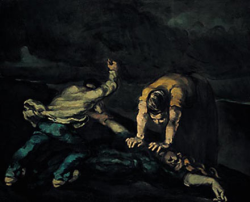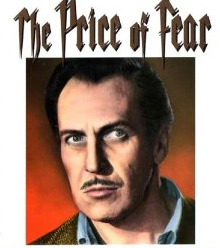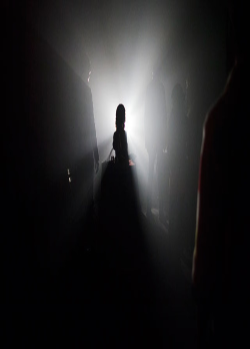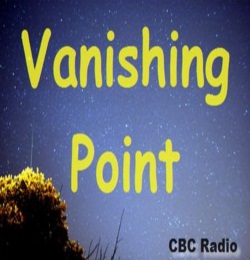Murder Clinic:
“A Scrap of Lace”
(9/22/42).
***
The Price Of Fear:
William And Mary
(09/08/73).
***
Vanishing point:
(The Stories Of J .G. Ballard)
Low Flying Aircraft
(12/05/88).
***
Sleep No More:
Thus I Refute Beelzy – The Bookshop.
(03/06/57)
***
Right Click here to download
![]()
Murder Clinic – “A Scrap of Lace” aired originally on September 22 of 1942
Murder Clinic which was produced by WOR in New York aired from 1942 to 1943 on the Mutual Network.
An anthology of stories derived from the works of then popular mystery authors the show adapted the likes of Agatha Christie, G.K. Chesterton, John Dickson Carr and many others to excellent effect.
All of this said, there isn’t much historical documentation for the series. The program has evaded the attention of John Dunning and his excellent book, On the Air: The Encyclopedia of Old-Time Radio, and Jim Cox’s Radio Crime Fighters.
What information exists is scattered here and there across the web. Like a lot of Mutual programs Murder Clinic had no stable day or time throughout its existence which almost certainly contributed to its premature demise.

This week’s selection is the adaptation of a adventure as written by William Hulbert Footner (1879-1944) and published in the book Madam Rosika Storey in 1926 (Link is to e-book seller. I have a link to a free download is at the bottom of this section) It looks very much like the story itself must have first seen publication two or three years earlier. Probably in some magazine or another. I haven’t been able to find anything very certain on this matter.
In this story, a charming and prominent young woman is murdered. This is where Rosika comes into the picture. She is called in to find out who done it and save the family from scandal.
William Hulbert Footner (1879-1944) was born in Hamilton, Canada, and emigrated to New York when he was nineteen. He wanted to be an actor, and his first work was a play in which he was given a small part. Several bit parts followed, and a few unflattering notices from critics. This promoted a change of plans, he decided to become a writer instead. This proved an excellent idea as very early in his career he wrote a handful of adventure stories based on personal experiences including the book, The Huntress which was adapted into a successful movie.
In the early 1920s Footner turned his talents to detective stories. It was in this genre that he built a following in America, the United Kingdom, and elsewhere.
Today it is not uncommon for the protagonists in detective fiction to be female, however, in the early 1920s when Madame Storey, Private Investigator was born. Well, this was a bit of a departure but not exactly unheard of. The British writer Andrew Forrester, Jr. introduced the first female detective character, Mrs. Gladden, in The Experiences of a Lady Detective in 1864.
A Scrap of Lace is in the public domain and you can lay your hands on it (so to speak) here.
Actually, there’s quite a bit of stuff from old Hubert at the Internet Archive here is a link to that index.
![]()
The Price Of Fear – William And Mary (09/08/73)
The Price Of Fear was a Horror-Mystery program produced sporadically by BBC Radio. Enormously successful in the United Kingdom and abroad, it produced a total of 22 episodes between 1972 and 1982.
For it’s writing talent the show drew from a pool of talented new writers, such as William Ingram (who wrote the majority of the scripts). Dramatizing the most chilling stories they could find the show often did adaptations of the works of established writers: Roald Dahl, A.M. Burrage, Bram Stoker and others.
The Show was hosted by, and usually starred Vincent Price. Price whose background in horror and suspense on radio,television and, of course, movies back dropped the series in a way only a handful of performers could. Mostly though it was the way Price narrated these tales (as though he himself had actually lived them) that was responsible for the success of the show.

Based on the short story by Roald Dahl William and Mary has been dramatized a number of times and is something of a twist on the famous Donovan’s Brain.
Mary Pearl’s husband William has passed away. Soon after the funeral she is shocked to discover that William’s brain was removed from his skull immediately upon death, hooked up to an artificial heart machine and now resides in a basin. William is, after all, not quite dead yet.
![]()
Vanishing point The Stories Of J .G. Ballard Low Flying Aircraft (12/05/88)
Vanishing Point is a science fiction anthology series that ran on CBC Radio Under that exact title from 1984 until 1986. Then continued for another several years with various subtitles. One example of this is, “Vanis in today’s program we have hing Point: The Stories of JG Ballard.” This practice has confused OTR historians. How do you date this thing? Most have given the dates from above with the caveat from above.
The series was produced by Bill Lane in the C.B.C.’s Toronto studios and produced some excellent radio.
In 1988, Canada’s national radio corporation broadcast a series of 30-minute radio dramas, based on the short stories of JG Ballard. The writers commissioned to create the dramas included Lawrence Russell (A Question of Re-entry, The Dead Astronaut), Margaret Hollingsworth (The Cloud Sculptors of Coral D), Brian Wade (Low Flying Aircraft, News From The Sun), Paul Milliken (Having A Wonderful Time), and James R. Wallen (Escapement). Lauded at the time, these forgotten gems explore the dramatic aspects of JGB’s early short stories within an auditory medium. today’s story, Low Flying Aircraft was originally published in a collection of short stories Low-Flying Aircraft and Other Stories in 1976 and is one of Ballard’s dystopian, rather Orwellian, takes on the near future. The number of people have been severely reduced and pregnancy requires a license.
Privacy, has pretty much disappeared.
![]()
Sleep No More presented two short stories, “Thus I Refute Beelzy” and “The Bookshop” on March 6 of 1956
Nelson Olmsted was a national treasure. For more than 35 years, Olmsted’s extraordinary vocal performances were the basis for his exceptional success as a radio and TV performer .
In “Sleep No More”, Olmsted followed a rich tradition of broadcasting with his presentation of supernatural and suspense dramas for which he drew from some of the finest short literature the English language.
It is true that, “Sleep No More” arrived late in the Golden age of radio running from 1952 to November 1956.
This was a popular show; popular enough for Vanguard Records to produce a record, also called, “Sleep No More” contains six stories that never made it into the Radio series:
The Signalman, The Mummy’s Foot, Markheim, An Occurrence At Owl Creek, What Was It?, The Body Snatcher.

In this particular episode of Sleep No More Nelson Olmsted brings us two short stories. The first is John Collier’s, “Thus I Refute Mr. Beelzy”. This is the story of Mr. Carter (the “I” of the title) a cruel, selfish father locked in a struggle with the invisible “Mr. Beelzy” for the love and soul of his young son Simon.
“Thus I Refute Beelzy” was originally published in the Atlantic Monthly for October of 1940
The second story is a Nelson Bond work, “The Bookshop” which was originally published in The Blue Book Magazine’s, October of 1941 issue. It’s the story of a writer who is having difficulty finishing his great novel. In the course of the story he takes a trip to a small spooky bookshop in New York. It is here that he discovers the finished editions of stories left unfinished by their authors. How about his book? Will it end up there?

Leave a comment